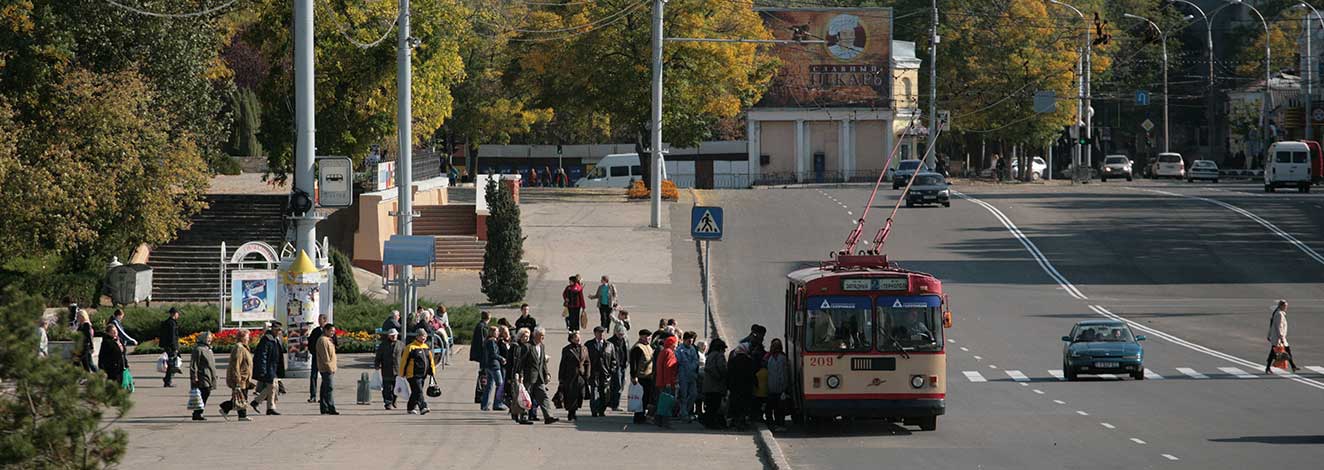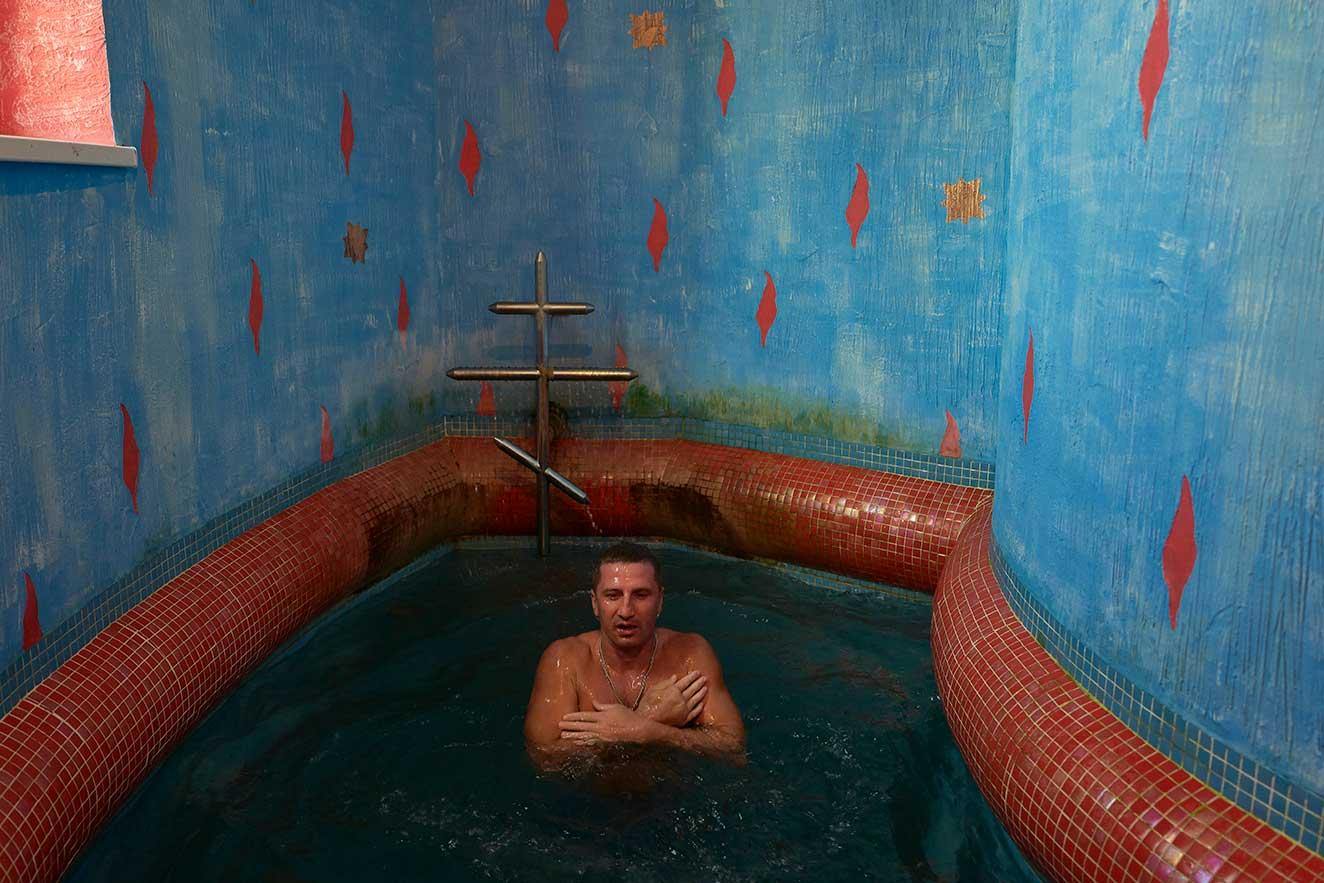Those who seek to visit a country that does not exist on the political map of the world are welcome in Transnistria. That's the invitation extended by National Geographic journalists in a feature on the self-proclaimed Pridnestrovian Moldavian Republic (PMR), on the left bank of the Dniester River.
Quite so. A country with its own flag, its own anthem, its own passport, its own currency and its own president, but not recognised by anyone because it does not exist under international law.
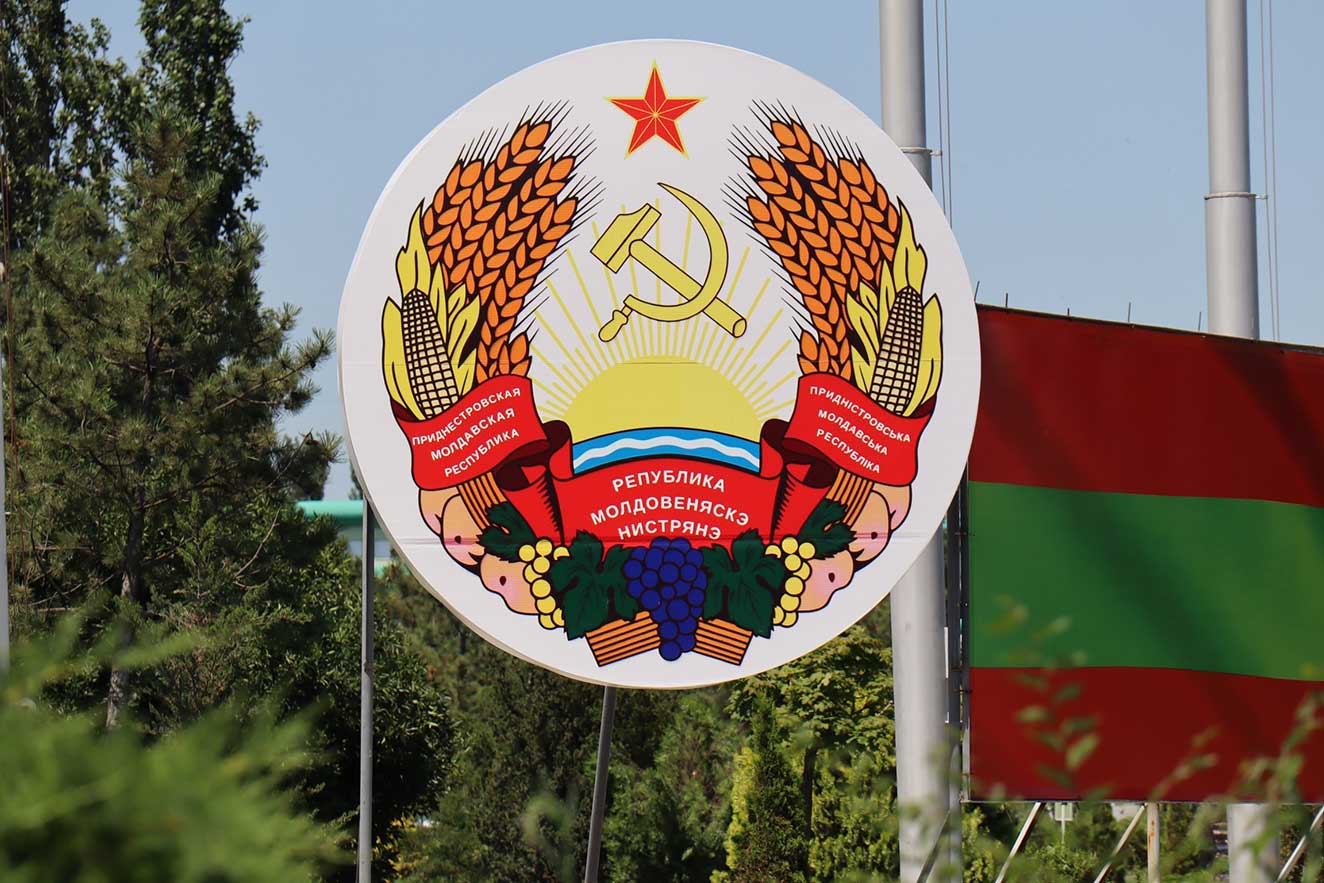
Grey, grey, grey
RMN is less than an an hour's drive from Chișinău. To get there, any non-national needs a passport. Filming and photography are banned virtually everywhere. This is clearly stated in the many warnings on display. So don't go playing cameraman or photographer, regional police won't go easy on you. You can be charged with espionage and then invited to visit the not so hospitable local prison system. Might sound like a joke, but it's not.
There are about 500,000 people living on the left bank of the Dniester River, of different ethnic groups, most of them Russian speakers. The region's main cities: Tiraspol, Bender and Ribnitsa.
Tourism flourished on the left bank of the Dniester thanks to the funding provided by the European Union for regional development. Brussels hopes this will bring the communities on both sides of the Dniester closer together, by their secret names: Nut and Wall, but progress in this direction is yet to be visible.
Transnistria is considered to be an open-air museum dedicated to the Soviet Union. Yes, the Soviet Union. If you ask the Google genie, you can see for yourself: downtown Tiraspol, a city with the flair of a capital, is inhabited by a Soviet tank, a statue of Lenin, war memorials and other exhibits of a time machine for the nostalgic. This post-modern landscape is covered with the Sheriff's emblem, the holding controlling the economic life of the region. The only colour stain on this grey canvas.

Junior Galactics
Speaking of which: the place is also known for its homonymous football team, F.C. Sheriff Tiraspol, holding no less than 21 titles in the Moldavian championship, particularly after sheriff's boys (we'll get to him in a moment) won against Real Madrid's galacticos, in their very own backyard, Santiago Bernabeu, by 2-1. September 2021: another colorful moment in history. International press buzzed at the time and everyone wondered who was the hare in the hat.
Just like any other perverse social phenomena, the success divided the enthusiasts into two factions: Chișinău claimed the victory on the grounds the team was playing in the championship of Republic of Moldova, while Tiraspol claimed it was bred by their own money. On top of that, most of the players at FC Sheriff are absolute foreigners, just as the money funding the club is claimed to be.
Owner of the club is Victor Gușan, who controls the entire region and owns, practically, all the important businesses around there. Together with fellow oligarch Ilya Kazmaly, Gușan owns shops, petrol stations, hotels, factories, internet services, fixed & mobile telephony, the banking system, the insurance system and, of course, the media. Gușan is former KGB and leader of Tiraspol militia. He was part of the group that arrested Ilie Ilașcu in 1992, and images of Gușan's involvement in the armed conflict on the Dniester River leaked all over the internet.
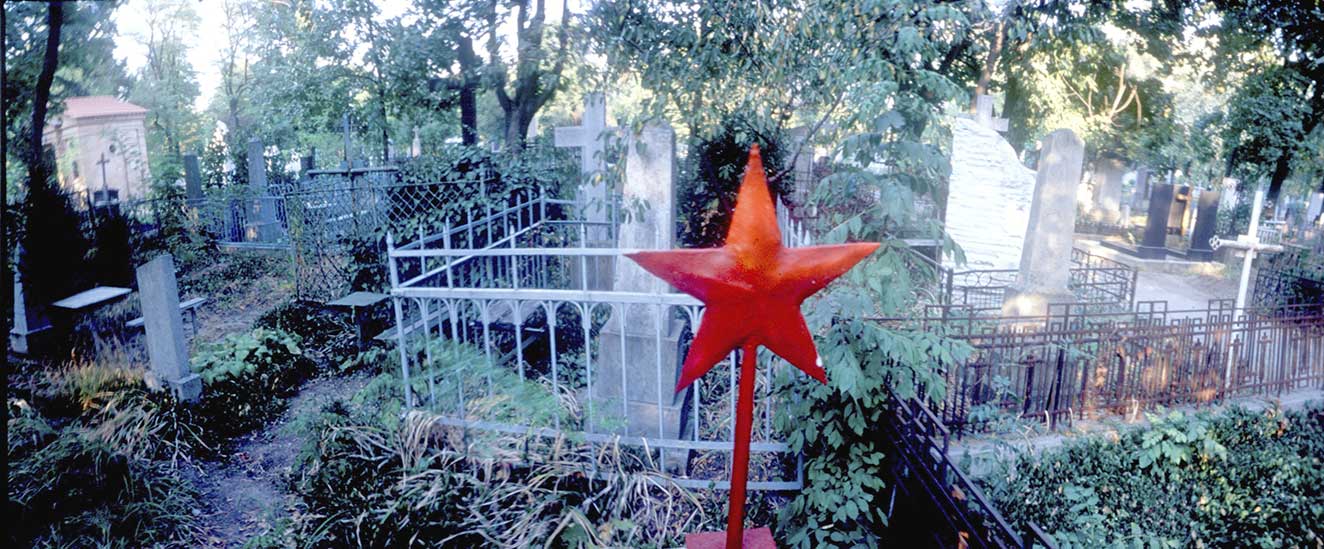
Back in USSR
Apart from the oligarchs, the region is run by the Tiraspol administration, made up of a president, a prime minister and a handful of cabinets. The very few brave voices in the region say that the people on the left bank of the Dniester are captives of this regime. Respect for human rights is little known to the Transnistrian authorities, and non-governmental organisations in Chișinău report numerous abuses committed against them: arbitrary arrests, mysterious disappearances, torture, restrictions on freedom of movement, blackmail and so on.
The only justice for the people there is usually available through the ECHR, the Republic of Moldova being forced to pay substantial compensations for human rights violations in Transnistria. To keep them silent, last year the elected representatives of the region decided that those who turn to international or Moldavian courts should be sanctioned with heavy prison sentences. The model of practice, like the sun, comes from the East.
Education, but not for you
Although the Latin alphabet was banned by the authorities in Tiraspol back in 1994, there are still eight schools that still use it and report to the Ministry of Education in Chișinău. Only one of the eight schools is located in the territory controlled by the constitutional authorities. Namely, " Ștefan cel Mare" high school in Grigoriopol, based in the village of Doroțcaia, with students forced to travel 54 kilometres every day, frequently being stopped at checkpoints. An oasis of Romanian education in the region, despite constant pressure from the Transnistrian authorities.
Directors of institutions are regularly instructed not to play the state anthem or display the national flag. They smuggle books and learning resources and educate in totally unsuitable rented facilities. Most of the buildings owned by these institutions were taken over by the Tiraspol administration. Parents with children in Romanian schools are being harassed in their workplaces.
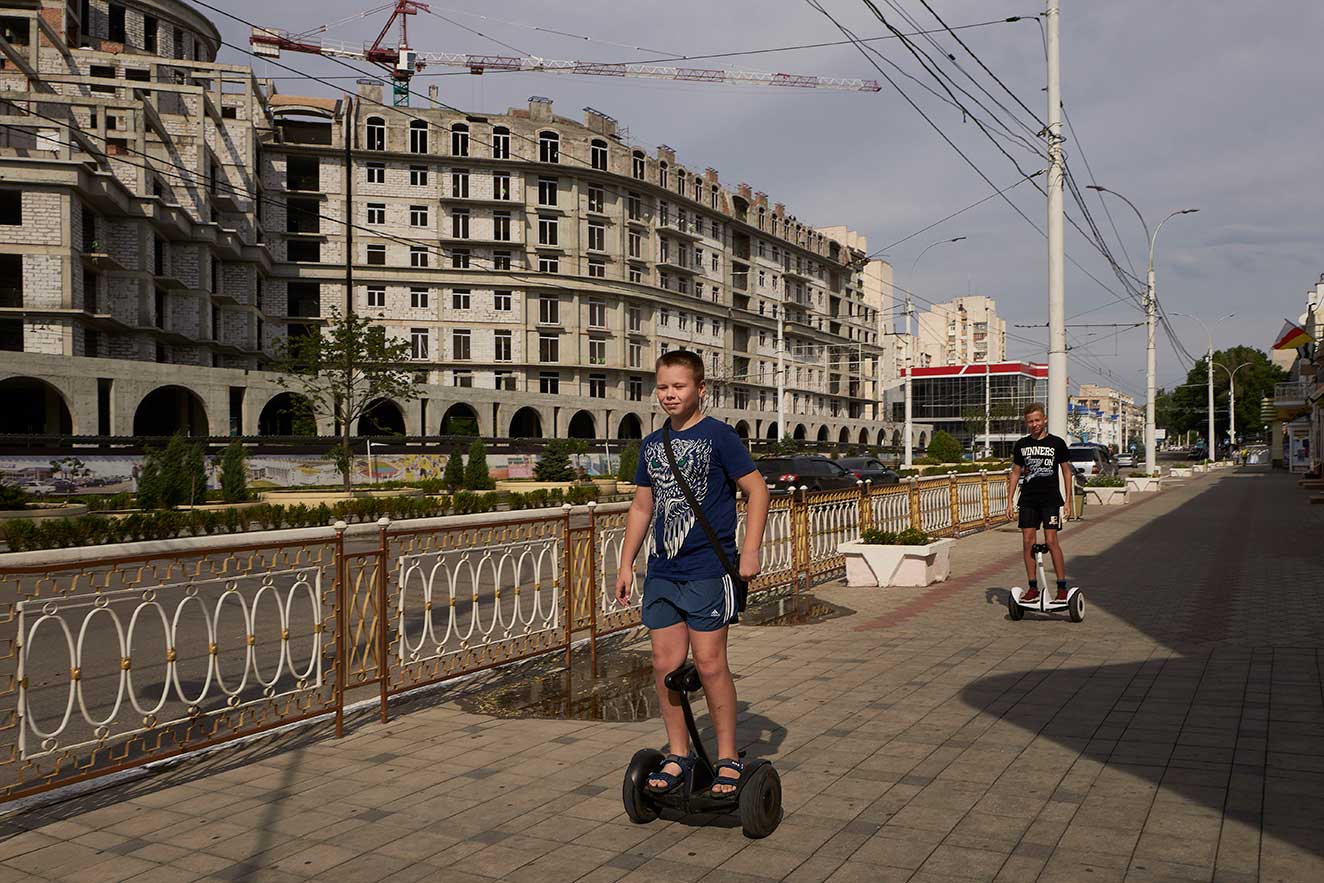
DepoZ
When it comes to Transnistria, Chișinău supports the cause of reintegration and territorial integrity of the Republic of Moldova, internationally recognised in 1991. A position endorsed by Ukraine. On the other side, Moscow and the administration in Tiraspol accuse Chisinau of meddling in the internal affairs of another state. This leaves little room for dialogue.
And since the beginning of Russia's war against Ukraine, the Transnistrian region is seen as a potential security risk for the Republic of Moldova. Rightly so, as this territory is right next to the Ukrainian border and there are around 2000 Russian troops in the region, successors to the 14th Army, a structure that was also involved in the 1992 war on the river Dniester.
But wait, there's more: there is a military cache in the village of Cobasna, a remnant of the Soviet Union, allegedly the largest in Eastern Europe, and the main reason why the Russian military has not yet left the Transnistrian region. It is guarded by GOTR, a Russian military task force. The message from Chișinău, however, relayed by President Maia Sandu to the UN General Assembly plenum, is clear: "Russia must withdraw its troops from the Transnistrian region, and the ammunition depot in Cobasna must be shut down".
Chișinău authorities never had and do not have access to this cache. According to a study by the Academy of Sciences, in the event of a deflagration, the force of the explosion could be equivalent to that of an atomic bomb. Why is all this information relevant? Because the Russian invasion of Ukraine brought back the discussions about the Cobasna storage site and the threat it poses.
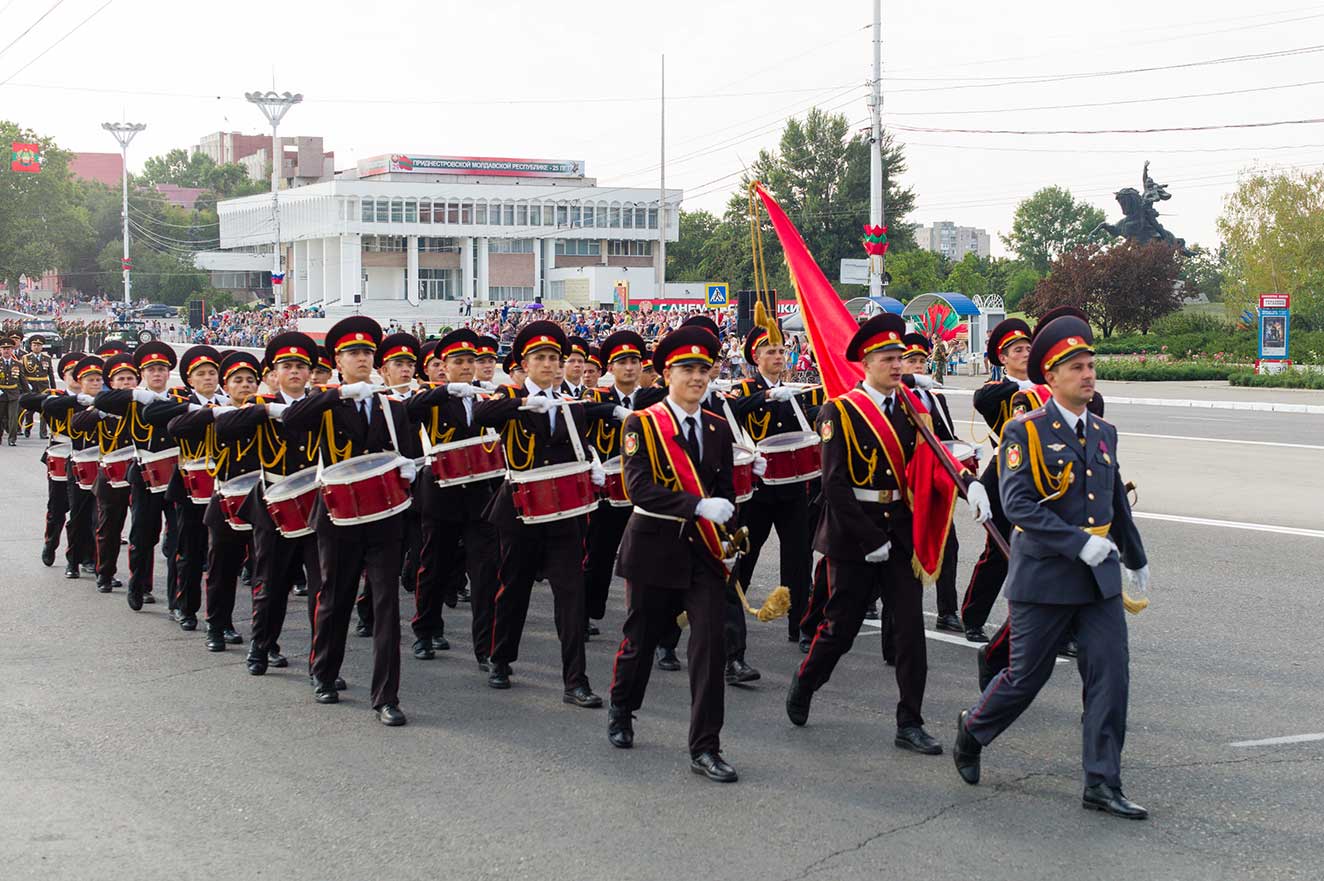
Fear of the domino effect
There was great concern at the beginning of the war, when it was still unclear where the Russian tanks would stop their advance. But the idea of the war escalating to the territories of the Republic of Moldova did not go away even after Kiev's army put up such a fight. Several episodes led to even more concerns.
Tension peaked last year in April when three unidentified individuals attacked the PMR Security Ministry with grenade launchers. Explosions that the Transnistrian leadership distanced itself from, although it did not investigate further. Regional leader Vadim Krasnoselski, a former militia officer backed by Putin's party, suggested the trail would lead to Ukraine, but Kiev described the actions as mere provocations. Chișinău stated back then that what happened was the result of clans fighting inside the enclave.
After the incident, authorities in Tiraspol declared a red code for terrorism. Meanwhile, Moscow was sending out messages of concern to add fuel to the fire, and people on the left bank of the Dniester began to panic.
One other episode troubled the muddy waters. Earlier this year, the Ministry of Security in the Transnistrian region claimed to have prevented a terrorist attack against local political leaders. According to their statement, Ukrainian Security Service was behind the attack, which again declared it a provocative act orchestrated by Kremlin. Authorities in Chișinău were mostly reserved and relayed neutral messages to avoid further tension. Deputy Prime Minister for Reintegration Oleg Serebrean declared that the epic messages from Kremlin about potential dangers are nothing more than a new phase of the hybrid war waged by Russia against Moldova and Ukraine.
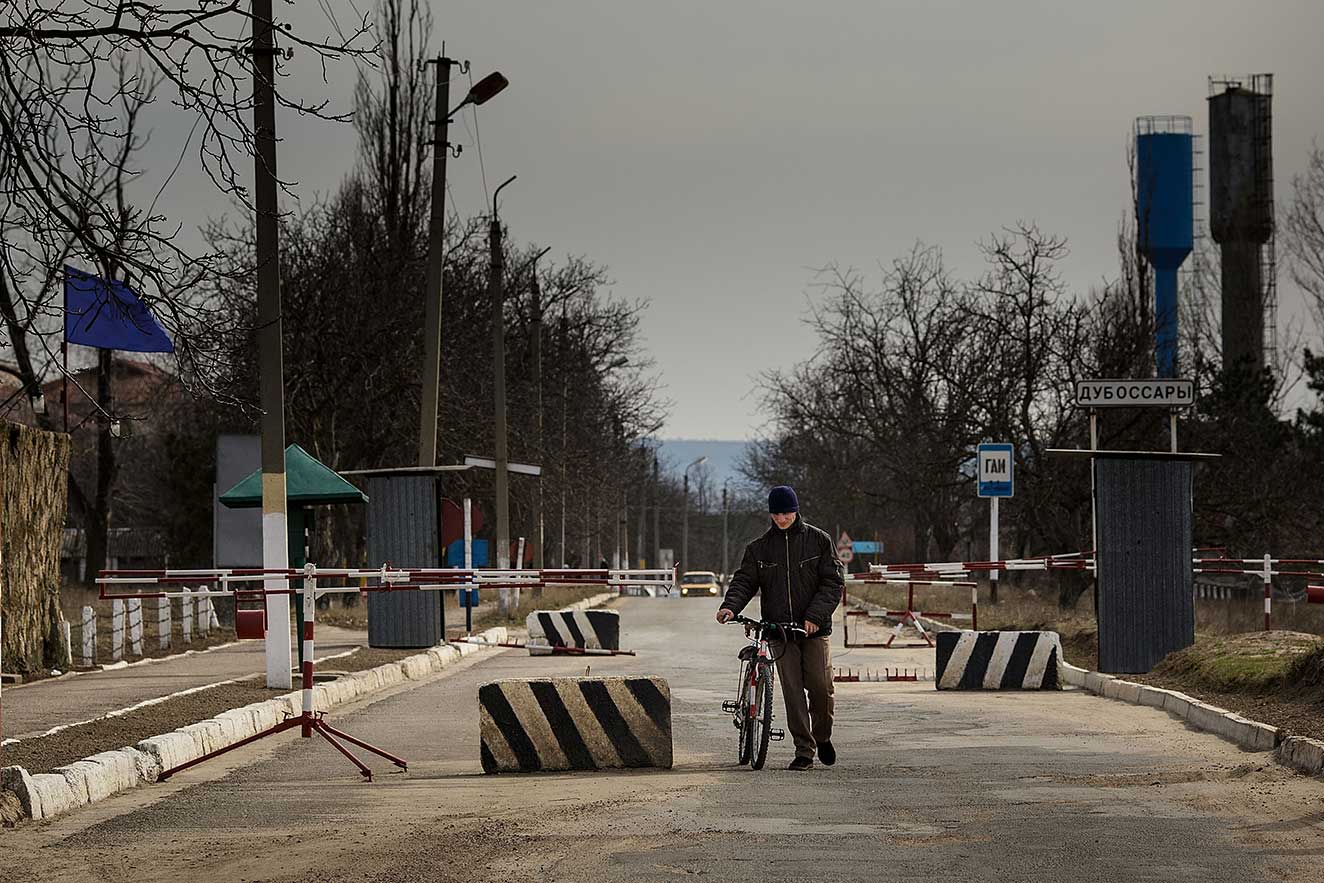
Another fear constantly fuelled by Russia is the concentration of Ukrainian forces on the border with the PMR, which they claim intend to attack the enclave. The truth is that Ukraine was just reinforcing its security on the Transnistrian border. Kiev repeatedly made it clear that it would not take any further action because the Transnistrian region is a matter of Moldova's sovereignty and territorial integrity. This was reinforced by Zelensky at the European Political Community Summit in Chișinău in early June. "Ukraine can act militarily and help only if there is a specific request from the Republic of Moldova (... ) There was no such request," Zelensky said.
In an interview with TVR MOLDOVA, New Geopolitics Research Network director Mykhailo Samus pointed out that, after the victory, "the most important role will be played by the Republic of Moldova, Romania and Ukraine, as they will have to decide on the format of Moldova's reintegration process. And most important, Russia will have very little leverage to oppose this. Of course Russia will oppose everything, but if Moldova and Ukraine have the political determination and, alongside them, Romania and other states that want to get involved in the process of guaranteeing Moldova's territorial integrity, then Russia will not be able to do anything about it."
But for now, Russia could still do a great deal of damage. Its hybrid war in the Republic of Moldova continues, and Transnistria is the perfect platform for Russian propaganda in the region. When you turn on the radio or TV, you hear, in Russian, how evil and decadent the West is and how many sacrifices Russia is making to save humanity and the Universe.
Media is controlled by Kremlin and Russian channels broadcast in the region without restrictions, so many Transnistrians see everything exclusively through the lens of Russian propaganda. They don't know much reality because there is no one there to inform them about it. Some are educated by close relatives they have on the right bank of the Dniester who often travel to the region, but that does not make a big difference.
Under these circumstances, the confidence of people living on the left bank of the Dniester in the solutions offered by Chișinău remains a challenge. Moscow is disturbed by Moldova's European course and will not simply allow things to get out of hand.
